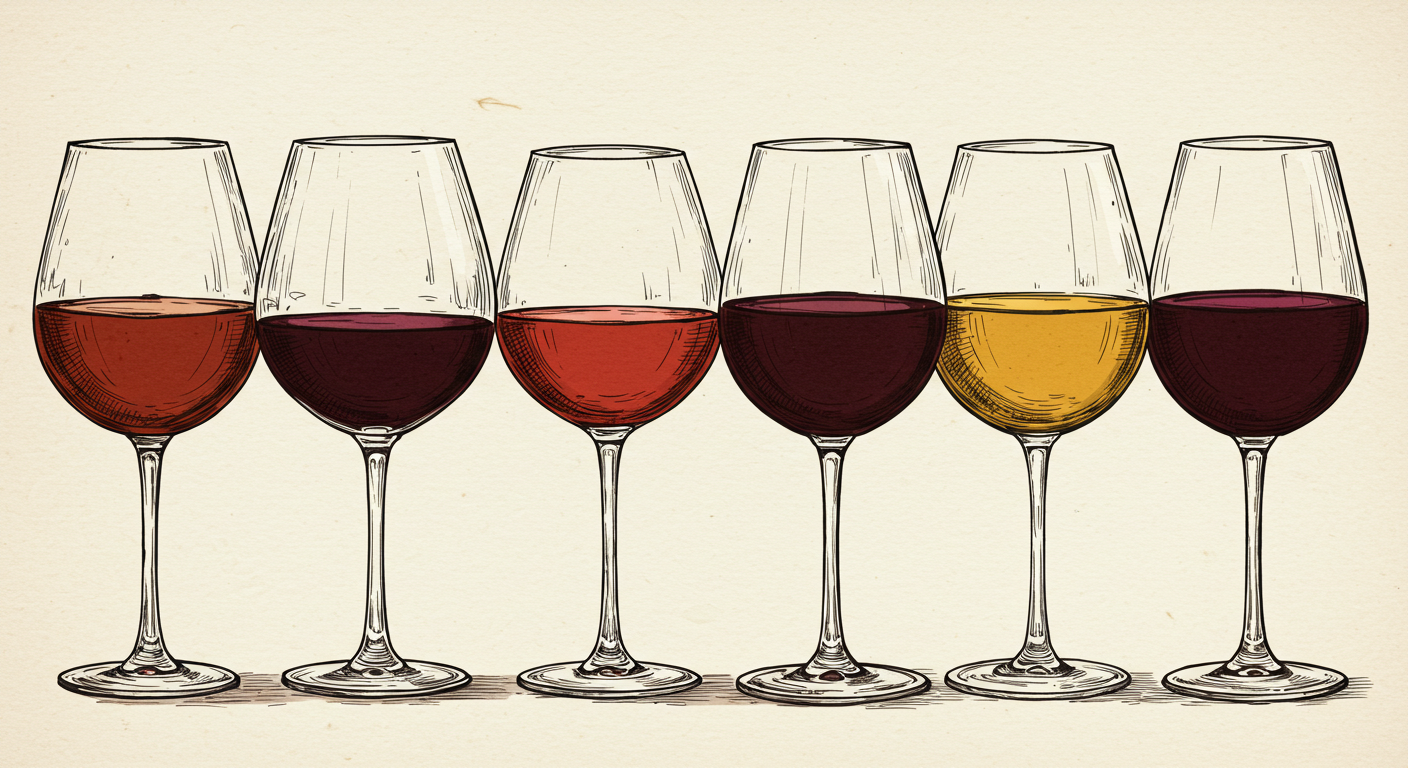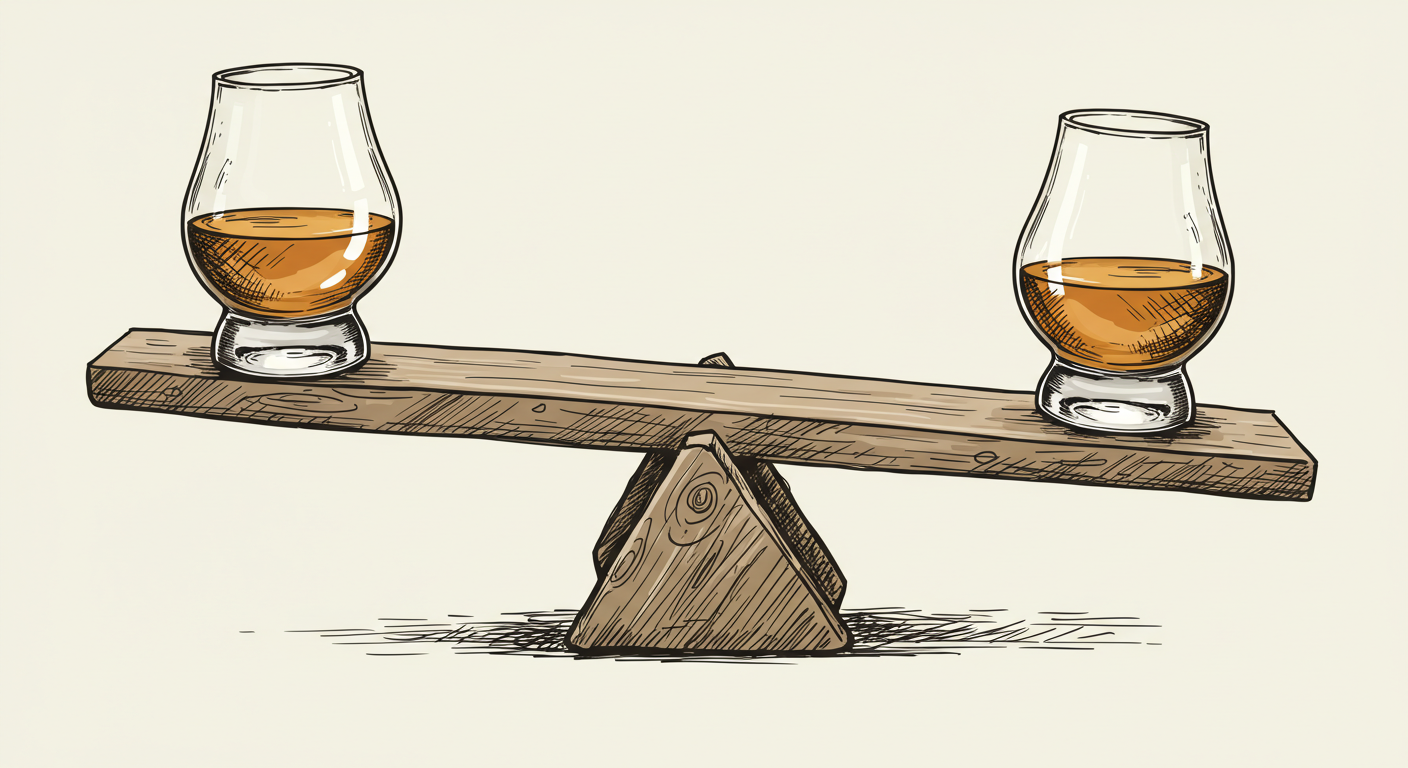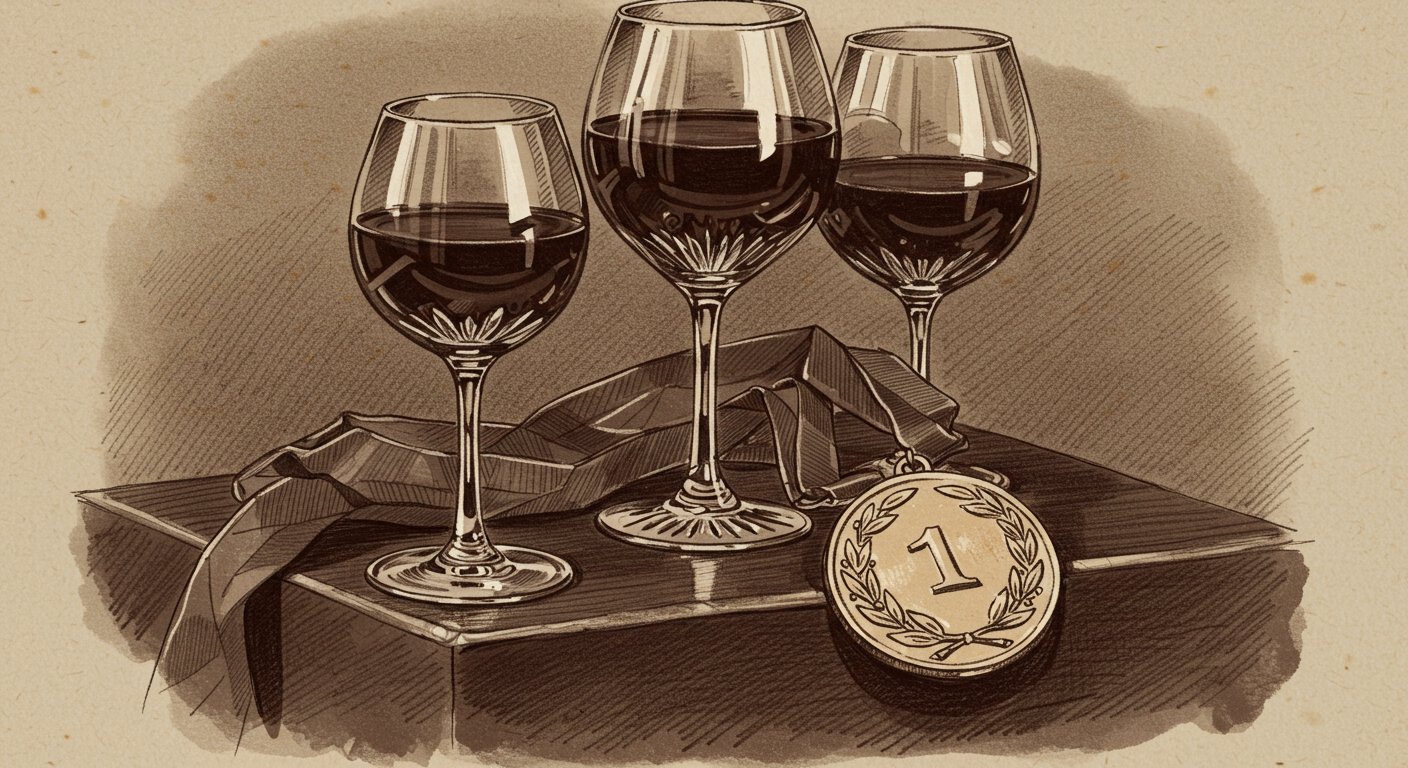The Bias That Shapes Every Tasting Experience
While we like to consider flavour as being a quantifiable, measurable, and tangible facet of the world, it is a constantly shifting and evolving phenomena. Whatever food or drink you sniff or savour right now, your experience of it is dependent on what preceded it.
If anyone has attended or hosted a vertical tasting, you will understand this first-hand. There’s a logical order whereby one flavour experience leads into the next like the scenes from a well-scripted drama.
In part it’s due to how some flavours mask others i.e. how they overpower them, and also olfactory fatigue (read about it here). But also, it’s because of a psychological curiosity called the contrast effect. Understanding this cognitive bias can transform the way you approach how flavour is enjoyed, whether you’re a sommelier, host, ambassador, chef, brewer, distiller, winemaker, or curious savourist.
What Is the Contrast Effect?
The contrast effect is a type of cognitive bias whereby our perception of an item is strongly influenced by comparisons to what we recently experienced. In simple terms, we often judge things not in isolation, but relative to what came before. A wine that tastes mediocre on its own may seem extraordinary if it follows a particularly bland sample. Conversely, a chocolate may taste exceptionally sweet it follows a rich, intense dark chocolate. But also, a 50% abv whisky may appear gentle if it follows a 61% abv dram.
This bias is rooted in human cognition. Our brains are wired to detect differences, which has historically helped us evaluate food, environment, and safety. While it’s a useful survival tool, in tastings it can exaggerate or diminish our perception of flavours, textures, aromas, and even the perceived quality of a product.
The Contrast Effect in Tastings
Things like whisky tastings, wine tastings, or beer tastings are inherently comparative experiences. Think about walking into a scotch whisky tasting. If the first whisky is extremely spicy, the next whisky – although only slightly less spicy – might feel surprisingly mild and subtle. Similarly, a very salty cheese will make a less salty cheese taste almost sweet in comparison. In these scenarios, your brain is not simply registering the objective qualities of each sample but is subconsciously influenced by the relative differences between them.
For wine lovers, this effect can be particularly powerful. A crisp sauvignon blanc may seem unacceptably acidic after an oaked new world chardonnay. If you start with a light-bodied white wine and then taste a bold red, the red’s intensity may feel overwhelming. This is why instinctively we often start with lighter, subtler flavours and progress to richer, more complex ones. The sequence is not just tradition, it’s a deliberate strategy to manage contrast effects and ensure each sample is appreciated in its best light.
Where’s the Science?
Research confirms that what we taste is never experienced in isolation; our evaluations depend strongly on sequence and context. One of the clearest demonstrations of this comes from a study in which participants rated the pleasantness of 50 taste solutions on continuous line scales while researchers tracked how each judgment was influenced by the previous one (Schifferstein et al, 1995).
The results revealed crucial yet small sequential dependencies i.e. a participant’s current rating was partly determined by what they had just tasted. There was a clear contrast effect. When the preceding sample was rated as especially pleasant, the next tended to seem less pleasant by comparison, and vice versa. Even with rinsing between samples and long pauses, these contextual carryovers persisted.
While using simple aqueous solutions made the results clean and interpretable, it also made them less representative of real-world flavour experiences. Actual food and beverage products combine taste, aroma, trigeminal (mouthfeel), visual, and auditory sensations; interactions among these modalities could magnify or dampen contrast effects. Thus, the findings, though robust, may underestimate the magnitude of contextual bias in more complex sensory settings in the real-world.
Here's where a compelling example from large-scale consumer research becomes relevant. A further study examined how tasting different kinds of products in the same session, particularly plain versus flavoured versions, can distort consumer acceptability ratings (Mazur et al, 2018).
The study involved five food categories: soy beverages, cereals, potato chips, dessert puddings, and salad dressings. Each test compared products with little or no flavouring (plain) against those with pronounced, complex flavour profiles (flavoured). Participants tasted these in two configurations:
Plain with flavoured products in the same session, and
Flavoured with flavoured products only.
The results revealed a clear negative contrast effect when plain and flavoured products were evaluated together. When a plain product followed a strongly flavoured one, it was rated significantly less acceptable than when it was presented first or tasted in a separate test. In other words, the plain item suffered by comparison; its mildness seemed dull or unsatisfying after a richer, more complex sample.
The Contrast Effect in Sensory Panels
The contrast effect isn’t just a fun psychological trick; it has serious implications for professional analysis, such as sensory panels in food and drink industries. Sensory panels are groups of trained individuals who evaluate products for aroma, flavour, and overall quality. Their assessments often guide product development, marketing, and quality control.
If not properly managed, the contrast effect can introduce bias into these evaluations. For example, if a very clean and fruity sample of whisky new make spirit is assessed right before a style of new make with heavy sulphur compounds, panellists may find the latter more sulphury than if it was sampled within a set of similar styled spirits. The previous sample set the benchmark to which the following sample is compared.
Over time, these biases can skew product evaluations and misinform decisions. To mitigate this, sensory scientists carefully design tasting sessions. Techniques include:
Randomising sample order – changing the order of samples for each panellist reduces systematic contrast effects.
Providing palate cleansers – neutral items like water create breaks designed to reduce the impact.
Pre-panel protocols – panellists should restrict exposure to strong flavours prior to the panel – such as coffee, tea, food, toothpaste, tobacco/vaping etc.
These strategies aim to reduce the impact of the contrast effect, allowing each product to be assessed with minimum bias. However, in a panel involving multiple samples, there will always be the contrast effect between the samples. This is why larger panel groups, although more costly, create cleaner data through randomising sample order and averaging the results.
Implications of Bias for Awards Judging
The contrast effect is particularly significant in competitions, such as wine awards, spirits awards, chocolate competitions, or cheese contests, as examples. Judges often taste dozens of products in a single session. Without careful management, contrast effects can bias the results.
For instance, imagine a series of craft beers in a competition. A well-balanced, hoppy IPA might seem extraordinary if it follows a mediocre pale ale, but slightly dull if it follows an intensely aromatic double IPA. Similarly, in chocolate competitions, the perceived richness or sweetness of one sample is inevitably influenced by the one that preceded it.
This has direct consequences for award outcomes: a product’s ranking may depend not only on its intrinsic qualities but also on its placement in the tasting sequence. Hence, we must acknowledge that humans are not perfectly objective and that our sensory perceptions are relative, not absolute. Mitigation protocols follow the same direction as those for sensory panels. However, whereas sensory panels aim to reduce hedonic evaluation, the very nature of a competition requires grading a product’s pleasantness. Therefore, an additional step for competition judging may be to assess the same samples over consecutive days in a randomised order.
The Role of Contrast in Flavour Matching and Evaluation
Beyond its psychological implications for tastings and judging, the contrast effect also plays a creative role in how we experience and design flavour itself. In gastronomy and sensory science, flavour pairing often follows three broad principles: similarity, contrast, and synergy (Spence et al, 2017). Each principle shapes not only how flavours are combined, but also how they are perceived and evaluated during tastings.
Similarity involves matching components that share overlapping flavour compounds or comparable sensory profiles. For instance, bitter chocolate can soften the astringency of a heavily tannic red wine.
Contrast, on the other hand, is a deliberate strategy of difference. In whisky tastings, a lactone-forward bourbon cask scotch can ‘pop’ against the bitterness of a hoppy beer.
Synergy (or emergence) is when combinations deliver new flavour experiences or else harmonise with one another. For example, oysters paired with champagne create a strong umami taste (Schmidt et al, 2020)
Leveraging the Contrast Effect for Better Experiences
While the contrast effect can be a challenge in panels and judging, it’s an opportunity to enhance enjoyment in casual or educational tasting experiences. By intentionally sequencing samples, hosts can create moments of surprise and delight.
In these contexts, contrast is not a bias to overcome but a tool to amplify sensory experiences and storytelling. It allows tasters to appreciate subtle differences they might otherwise miss and makes tasting journeys more memorable. Specific aspects of a product’s perceived aroma and flavour can be upregulated or downregulated, depending on the desired outcome.
In essence, the contrast effect reminds us that flavour is not absolute; it is relative, contextual, and emergent form of abstract perception. Therefore, the contrast effect is an important phenomenon to keep in mind because when people enjoy a product it is never a segregated experience. Every brand touchpoint sits within the context of what has gone before it – whether it’s contrasting or similar.
References
Mazur, J., Drabek, R. and Goldman, A. (2018) ‘Hedonic contrast effects in multi-product food evaluations differing in complexity’, Food Quality and Preference.
Schifferstein, H. N. J. (1995). Sequence effects in hedonic judgments of taste stimuli. Perception & Psychophysics.
Schmidt, C. V., Olsen, K., & Mouritsen, O. G. (2020). Umami synergy as the scientific principle behind taste-pairing champagne and oysters. Scientific Reports.
Spence, C., Wang, Q. J. and Youssef, J. (2017) ‘Pairing flavours and the temporal order of tasting’, Flavour.



